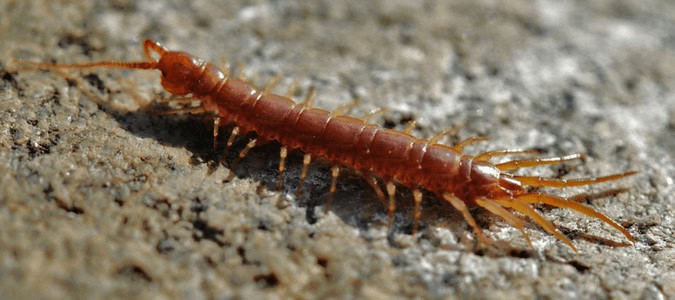A Comprehensive Guide to Millipedes in Arizona: Are They Poisonous?
Explore the fascinating world of millipedes in Arizona with this in-depth guide that delves into their biology, habitat, and behavior. Uncover the truth about their potential toxicity and learn how to safely coexist with these intriguing arthropods.
Whether you are a curious nature enthusiast or a concerned homeowner, this article provides valuable insights and practical advice to enhance your understanding of millipedes in the Grand Canyon State.

Understanding Millipedes
What Are Millipedes?
Millipedes are arthropods belonging to the class Diplopoda, characterized by their elongated bodies and numerous body segments. Unlike their more notorious relatives, the centipedes, which belong to the class Chilopoda, millipedes are generally harmless and are often mistaken for them due to their similar appearance. In Arizona, common species of millipedes include the African giant millipede and various native species that thrive in the state’s diverse environments.
Physical Features and Behavior
Millipedes possess a distinct anatomy, consisting of a cylindrical body divided into numerous segments, each typically bearing two pairs of legs. Their coloration can range from brown to black, often featuring patterns that help them blend into their surroundings. Millipedes exhibit a slow, deliberate movement, often curling into a spiral when threatened. The lifespan of Arizona millipedes can vary, but many live for several years, with reproductive habits that include laying eggs in moist soil.
Habitat and Distribution of Millipedes in Arizona
Preferred Environments
Millipedes thrive in moist environments, commonly found in forests, gardens, and areas with ample leaf litter. They prefer habitats that provide shelter and humidity, making them prevalent in the common desert regions of Arizona. Climate and seasonal changes significantly impact their populations, with increased moisture levels promoting higher activity. Geographically, millipedes are distributed throughout Arizona, adapting to various ecosystems from deserts to woodlands.
Role in the Ecosystem
Millipedes play a crucial role in maintaining soil health and nutrient cycling. As detritivores, they feed on decaying plant material, contributing to the breakdown of organic matter and enriching the soil. Millipedes also interact with other organisms, serving as prey for various predators while forming symbiotic relationships with fungi and bacteria. Their presence enhances the biodiversity of Arizona’s ecosystems, making them an integral part of the local environment.
Are Millipedes Poisonous? Debunking Myths and Misconceptions
Toxicity of Millipedes
Millipedes have developed unique defense mechanisms, including the secretion of chemicals that can deter predators. While these secretions can cause skin irritation or allergic reactions similar to a bee sting, it is essential to clarify that millipedes are not venomous. Unlike venomous creatures that inject toxins through bites or stings, millipedes rely on their chemical defenses for protection. Common misconceptions suggest that all millipedes are poisonous, which is not the case.
Safety and First Aid
If you encounter a millipede, it is crucial to recognize potential allergic reactions or skin irritations that may arise from contact with their secretions. Should you be bitten or exposed, wash the affected area with soap and water and apply a cool compress to alleviate discomfort. For those interested in handling millipedes, it is advisable to do so gently and with clean hands to minimize the risk of irritation.
Coexisting with Millipedes in Arizona
Preventive Measures for Homeowners
Homeowners can take several preventive measures to reduce millipede presence in gardens and homes. Best practices include maintaining dry conditions, removing leaf litter, and sealing entry points to prevent access. Natural deterrents, such as diatomaceous earth, can be effective, while habitat modifications can discourage millipedes from settling near homes. In cases of significant infestations, seeking professional pest control services, such as cutter backyard bug control, may be necessary.
Appreciating Millipedes in Nature
Encouraging a respectful attitude towards millipedes fosters a deeper appreciation for these creatures. Nature enthusiasts and families can engage in educational opportunities, such as guided nature walks or workshops, to learn more about millipedes and their ecological roles. Numerous resources are available for those interested in furthering their knowledge about millipedes and local wildlife.
Conclusion
In summary, understanding millipedes in Arizona is essential for fostering a harmonious coexistence with these intriguing arthropods. By recognizing their ecological importance and debunking myths about their toxicity, we can appreciate the role they play in our ecosystems. As you explore Arizona’s diverse environments, take the time to observe and respect the millipedes that inhabit them, enriching your connection to nature.

Fast Response Time
We know how inconvenient pests are, so we respond quickly and provide service within 24 hours.

Kindly Pest Guarantee
We stand by our work with free re-services. If pests return between your scheduled services, we’ll come back at no cost.

Comprehensive Pest Coverage
Our protection program covers more than just the “easy” pests. We handle 29 of the most common household pests.